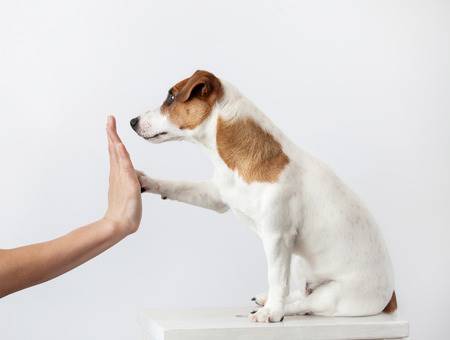Are you struggling with small dog training? Don’t worry, you’re not alone! As a proud pet parent of tiny furry friends, I’ve learned that training small dogs requires unique approaches and endless patience. Let me share some paw-some tips that’ll help you transform your little buddy into a well-behaved companion.
Why Small Dog Training is Different
When it comes to training these pocket-sized pooches, you gotta understand that their size affects everything. Just like how canine psychology works differently for different breeds, small dogs have their own unique needs and challenges.
The Small Dog Syndrome Challenge
Y’know what’s funny? Many people think small dogs are harder to train than big ones. But that’s not true! The real tea is that we humans often treat them differently, which leads to behavioral issues. At Pet like boss, we’ve seen countless success stories of perfectly trained small doggos.
Essential Small Dog Training Techniques
1. Start with Basic Commands
- Use treats at their eye level
- Keep training sessions short (5-10 minutes)
- Be consistent with commands
- Reward good behavior immediately
2. Socialization is Key
Getting your smol friend used to different environments is super important! Check out more about dog socialization techniques for detailed guides on this topic
3. Potty Training Tips
- Create a consistent schedule
- Choose an appropriate potty area
- Use positive reinforcement
- Be patient (like, really patient!)
Common Mistakes in Small Dog Training
1. Over-Protective Behavior
Listen up, fam! Being over-protective can make your tiny pupper anxious and defensive. Let them explore (safely, ofc).
2. Inconsistent Rules
Don’t let them get away with stuff just ’cause they’re cute! Rules should be the same every single time,
Advanced Training Tips
1. Leash Training
- Start indoors
- Use a lightweight leash
- Practice in quiet areas first
- Gradually increase distractions
2. Addressing Barking Issues
Small dogs often bark more than their bigger cousins. Here’s what helps:- Identify triggers- Teach the “quiet” command- Reward calm behavior- Stay chill yourself
Health Considerations During Training
Remember that small dog training should always consider their physical limitations:- Shorter training sessions- Gentler handling- Appropriate-sized equipment- Regular breaks
Creating the Perfect Training Environment
1. Safe Space Setup
- Remove hazards
- Use size-appropriate toys
- Create cozy corners
- Install baby gates if needed
2. Exercise Requirements
Even tiny puppers need exercise! But like, adjust it to their size:- Short walks- Indoor play sessions- Mental stimulation games- Gentle agility exercises
Troubleshooting Common Issues
1. Separation Anxiety
Many small doggos get super attached to their humans. Here’s what helps:- Gradual alone time- Comfort items- Calming music- Regular exercise
2. Resource Guarding
Some small puppers get protective of their stuff. Try:- Trading games- Multiple resource spots- Positive reinforcement- Professional help if needed
Building Confidence
Small dog training should focus on building confidence – Praise small victories- Create achievable challenges- Use encouraging tones- Celebrate progress
Advanced Training Goals
Once you’ve mastered the basics, try:- Trick training- Agility courses- Nose work- Therapy dog training
The Role of Professional Training
Sometimes, getting help from a pro trainer can be super helpful:- Personalized advice- Structured programs- Behavior modification- Group classes
Maintaining Training Success
1. Consistent Practice
- Daily training sessions
- Regular reinforcement
- Family involvement
- Patience and persistence
2. Ongoing Socialization
- Regular playdates
- Different environments
- Various people
- New experiences
Special Considerations for Different Breeds
Different small breeds might need different approaches:- Terriers need more mental stimulation- Toy breeds require gentle handling- Spaniels love water activities- Chihuahuas need extra patience
Final Thoughts
Small dog training isn’t rocket science, but it does need dedication and understanding. Remember that every pupper is unique, and what works for one might not work for another. Stay patient, consistent, and loving, and you’ll see amazing results!
Quick Tips Summary
- Start early
- Be consistent
- Stay positive
- Keep sessions short
- Use appropriate rewards
- Never force or punish
- Celebrate progress
- Stay patient
Remember, training your small dog is a journey, not a race. Take it one step at a time, and don’t forget to enjoy the process! For more detailed guides and tips about dog care and training, check out our other articles at Pet like boss.












